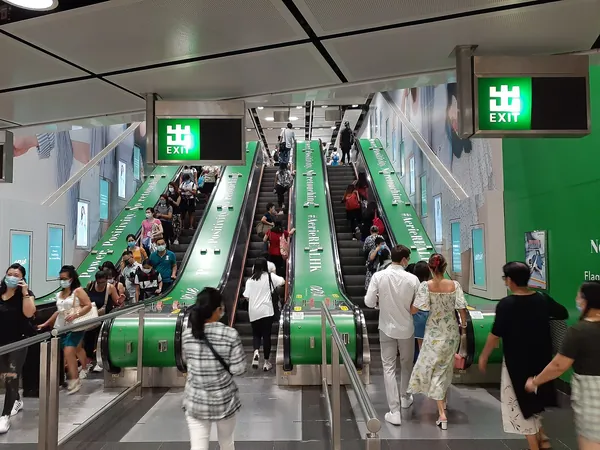
Hong Kong's Urban Renewal Authority Considers Bond Issuance After Tender Failure: Major Redevelopment Project Looms
2024-11-03
Author: Ling
Hong Kong's Urban Renewal Authority Considers Bond Issuance
The Urban Renewal Authority (URA) of Hong Kong is facing significant financial challenges and is now contemplating the possibility of issuing bonds or securing additional loans. This comes in light of its plans to independently manage a major redevelopment initiative in Kowloon City, following a disappointing tender process in September.
Shift to Self-Initiated Approach
Wai Chi-sing, managing director of the URA, has indicated a shift to a "self-initiated approach" for the Kai Tak Road/Sa Po Road development scheme, aimed at maximizing planning gains and delivering substantial benefits to the community. The failed tender attracted only one bid from CK Asset Holdings, owned by property mogul Li Ka-shing, but the terms proposed strayed from the project's original objectives.
Financial Strain and Future Viability
Wai has highlighted the potential financial strain this project could place on the URA and acknowledged the need for careful study to assess the viability of developing the Sa Po Road project independently. He stated that failure to proceed could hinder not only the rejuvenation of Kowloon City but also the connectivity with the adjacent Kai Tak development and slow the progress of the Nga Tsin Wai Road redevelopment project.
Liquidity Position and Financial Commitments
In a legislative paper, the URA reported a liquidity position of HK$18.19 billion (approximately US$2.34 billion) as of March 2024, which has seen a decline when compared to HK$23.62 billion from the previous year. The authority's outstanding project commitments and costs are pegged at HK$7.17 billion, with an estimated total cash requirement of around HK$82 billion over the next five years for various urban planning endeavors.
Recent Bond Issuance
In a proactive measure, the authority issued HK$12 billion in bonds in August across three tranches to fund its capital expenditures for urban renewal projects, alongside other corporate purposes. Wai reassured stakeholders that the URA’s cash flow is adequate to cover acquisition expenses for the upcoming years; however, he warned against over-reliance on financing to foster urban renewal.
Significance of the Kai Tak Road/Sa Po Road Project
The Kai Tak Road/Sa Po Road project is more than just a real estate development; it symbolizes a crucial effort to link the historically rich yet neglected Kowloon City with the thriving, modern Kai Tak area, designed to rejuvenate the community with facilities like a community nursery, public squares for retail and leisure, and ample underground parking for residents and visitors alike.
Conclusion
As Hong Kong grapples with its financial reality, the URA's decisions will undoubtedly shape the landscape of urban renewal in the city, making it a story to watch closely as it develops. Will the authority successfully navigate these challenges to revitalize Kowloon City? Only time will tell!

 Brasil (PT)
Brasil (PT)
 Canada (EN)
Canada (EN)
 Chile (ES)
Chile (ES)
 España (ES)
España (ES)
 France (FR)
France (FR)
 Hong Kong (EN)
Hong Kong (EN)
 Italia (IT)
Italia (IT)
 日本 (JA)
日本 (JA)
 Magyarország (HU)
Magyarország (HU)
 Norge (NO)
Norge (NO)
 Polska (PL)
Polska (PL)
 Schweiz (DE)
Schweiz (DE)
 Singapore (EN)
Singapore (EN)
 Sverige (SV)
Sverige (SV)
 Suomi (FI)
Suomi (FI)
 Türkiye (TR)
Türkiye (TR)